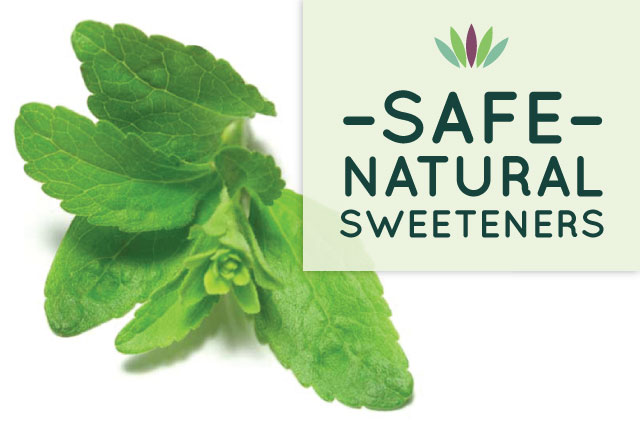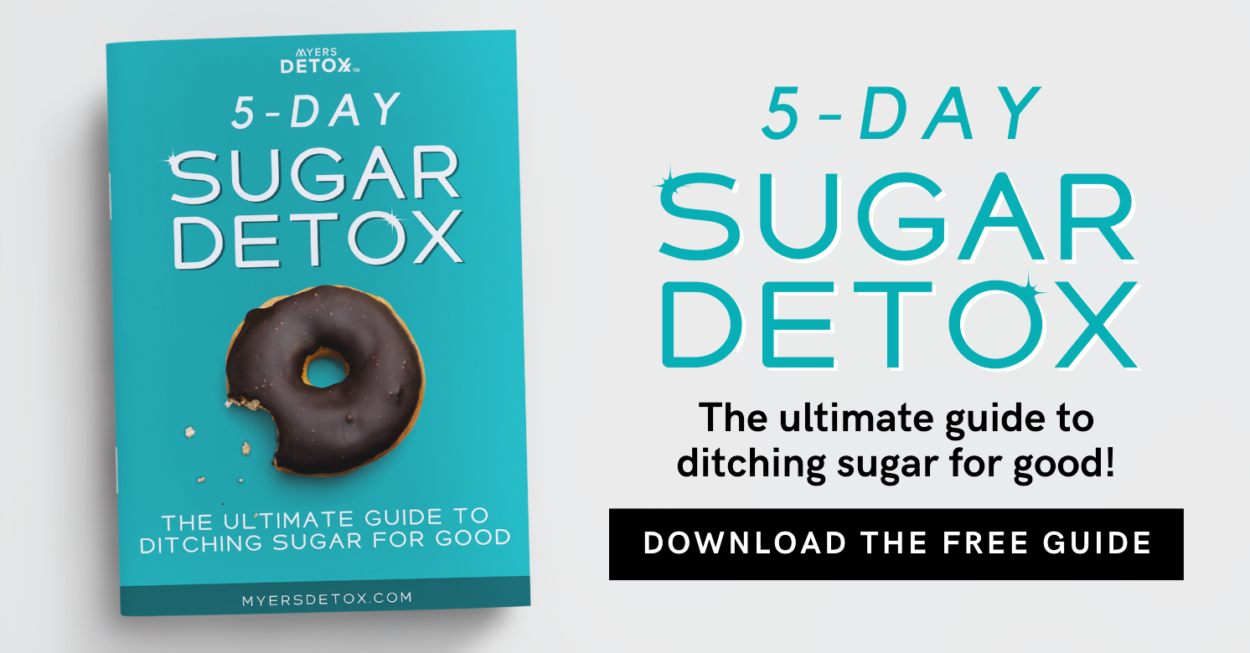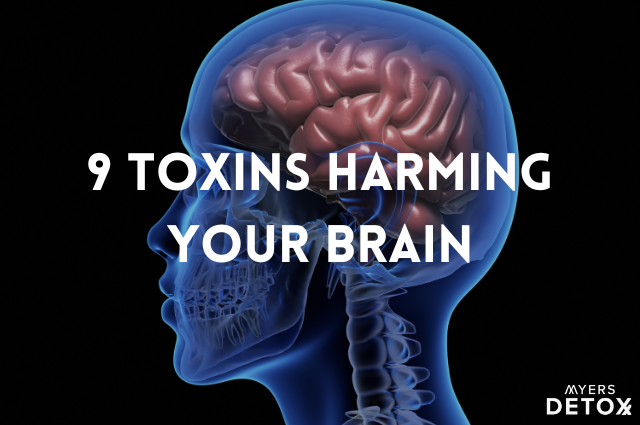Can’t live without some sweetness? Not to fear! You can have sweeteners, but there are some cautions even with “safe” natural sweeteners. Let’s illustrate the pros and cons, including GMO concerns, of Stevia, Xylitol, and Lakanto, the safest natural sweeteners.
Are natural zero and low calorie sweeteners good for you? They are certainly better for you than regular sugar, high fructose corn syrup, or any other kind of sugar. Hormonally, they have less of an impact, meaning they cause a lower response of your blood sugar. Whenever your blood sugar rises, your insulin does as well, even though it rises less with artificial sweeteners. Insulin is the hormone that instructs your body to store fat and not burn fat for fuel. Most think that because natural sweeteners have little or no calories that they don’t make us fat. Wrong!
This lowered blood sugar may be the root of the reason why you are likely to eat more when you use natural sweeteners: lowered blood sugar means you feel hungry. This can result in you consuming more calories. You can’t trick the body!
Any sweet taste will signal your body that calories are on the way and trigger a cascade of hormonal and metabolic responses to get ready for those calories. When your tongue tastes anything sweet, caloric or not, your body releases insulin in anticipation of what it thinks is sugar. It must prepare for this potentially life-threatening event (high blood sugar is an emergency). Sadly, you cannot escape this phenomenon with Stevia, Xylitol, or Lakanto, but they are far healthier for you than sugar. Just use them in moderation.
If your goal is to get off sugar completely, you may want to skip the natural sweeteners, even the safe ones, altogether. The problem with these sweet substances is that they are still training your tastes buds to highly sweet tastes that lead to real sugar cravings. Stevia and Xylitol are much better than most sugars, but maybe not the choice to make if you want to break free from a sugar addiction.
Like me, if you can’t live without some sweetness in your life, you have options. Let’s examine the three best natural sweeteners and recommended brands for each type of sweetener.
Stevia
Stevia is an herb native to Paraguay that is 300 times sweeter than sugar. It has been used for centuries as a sweetener and has been found in many studies to be completely safe. It even has some health benefits. Apparently, it improves insulin sensitivity to fight obesity and diabetes and can reduce hypertension (high blood pressure).
Stevia comes in many forms. It comes dried, powdered, and in a concentrated liquid extract. Make your choice based on the amount of sweetness you want (white extract powders are the sweetest). High grade products that use only grade A and B plants and separate out as much of the stems, roots, and leaf veins as possible will have a much better, sweeter taste, without the bitter aftertaste that many stevia products have.
Conversion Chart
You can’t replace sugar or honey on a cup-for-cup basis with stevia — the herb is much sweeter.
1 cup (227 grams) sugar= 1 teaspoon (5g) powder or liquid stevia
1 tablespoon sugar (14.3g) = 1/4 teaspoon powder (1.25g), 6-9 drops liquid stevia
1 teaspoon sugar (5g)= pinch to 1/16 teaspoon powder (.3g) , 2-4 drops liquid stevia
Is Stevia Safe?
While studies show that the two components in Stevia, called rebaudioside (Reb A) and other glycosides, have the potential to cause cancers and male fertility problems, these studies have mostly been debunked. Like any sweetener, Stevia should be used in moderation and not consumed in the large doses administered in these studies. Most toxicology tests show that it causes no harm in laboratory testing. However, I would avoid the highly processed Stevia products listed below in the section Stevia Products to Avoid. These, I fear, could have health consequences because they contain GMO’s, are highly processed (Truvia has 42 processing steps) and employ toxic solvents during the processing.
Most studies of Stevia have shown it to be completely safe. Stevia itself has been shown to actually help improve insulin sensitivity, thereby having the potential to prevent conditions such as diabetes and metabolic syndrome.
Let’s hear from some of the experts:
According to the Herb Research Foundation, numerous scientists, and tens of millions of consumers throughout the world, especially in Japan, the herb is safe and intensely sweet, which could make it a popular noncaloric sweetener.
Rob McCaleb, president, Herb Research Foundation, Boulder, Colo., USA…as a scientist with over 15 years researching the safety of stevia and of many other plants used as food or food ingredients, “I can assure that our conclusions in these various studies indicate that stevia is safe for human consumption as per intended usage, that is, as a sweetener.”
Mauro Alvarez, Ph.D., BrazilNo negative side effects with steviol glycosides were reported in this study. In this study of both stevioside and rebaudioside A in Food and Chemical Toxicology in 2008… “… No safety concerns were noted as determined by reporting of adverse events, laboratory assessments of safety or vital signs.” Barriocanal, 2008
GMO Concerns
With Stevia gaining in popularity, the large corporations that manufacture the more popular brands of Stevia like Truvia are using genetically modified forms of Stevia. Many Stevia brands contain GMO ingredients made from GMO corn. However, some of these ingredients, as long as they are certified organic or made from non-GMO corn, may be okay if you dislike the taste of pure stevia products. Become a label detective! The most common GMO ingredients to watch for include:
- Maltodextrin. Maltodextrin is a starch. In the US, this starch is usually derived from corn, and almost always genetically modified unless the product is certified organic.. In Europe, it is commonly derived from wheat. While wheat-derived maltodextrin may cause concern for individuals suffering from gluten intolerance, maltodextrin is such a highly processed ingredient that the majority of the protein is removed, rendering it effectively gluten-free. If wheat is used to make maltodextrin, it will appear on the label. Even so, the maltodextrin itself will be gluten-free.
- Dextrose. This is another name for glucose – a simple sugar. It’s made from GMO corn unless the manufacturer states otherwise or the product is certified organic.
- Erythritol. Erythritol can be derived from GMO corn. Erythritol is a sugar alcohol and has no effect on blood sugar levels.
- Xylitol. Xylitol is usually derived from corn, which is usually GMO. This ingredient is occasionally added to Stevia products.
The American Academy for Environmental Medicine urges physicians to advise all patients to avoid genetically modified foods, citing several severe health risks associated with them, such as infertility, immune system dysregulation, accelerated aging, poor insulin regulation and allergies, to name a few. Even Kaiser Permanente sent out a notice to its customers to avoid GMO’s! It will save them in health care costs! For a very eye-opening look at the concerns of GMOs in our food supply, I recommend the book Seeds of Deception or the film Genetic Roulette. You should avoid GMO foods, including natural and artificial sweeteners that contain unnecessary GMO ingredients.
Recommended Stevia Products
There are a growing number of Stevia options on the market; however, they are not all the same in quality, taste, bitterness or sweetness. I find that the liquid Stevias taste better. You may have a different preference. These brands are the ones that I have found to be of high quality and taste.
- Body Ecology Liquid Stevia. Body Ecology offers only the highest quality stevia extract (95% rebaudioside crystals). This extract was developed by taking only the sweet-tasting rebaudioside crystals, leaving behind the licorice-like flavor from the leaves.
- Trader Joe’s Stevia. I only recommend the organic version. Avoid the non-organic packets, which contain maltodextrin.
- Now Foods BetterStevia. Certified Organic. This pure stevia extract utilizes the whole leaf extract to retain the pure sweetness in real stevia versus other products that simply use isolates. It also delivers organic inulin, a prebiotic, and naturally occurring dietary fiber and fructooligosaccharides (FOS is a sugar) that help promote the growth of friendly intestinal flora. However, these can feed the bad guys, too. The powder is not bitter, but the liquid form tastes better.
- Sweetleaf Stevia. Sweetleaf employs proprietary technology that uses only cool, purified water to extract a select blend of glycosides from high-quality stevia leaves. The single serving packets contain inulin fiber, but the concentrated version in the small jar does not, nor does the liquid extract. While inulin, a prebiotic, feeds good bacteria in the gut, it can also feed pathogenic bacteria. Inulin can pose a problem with people with Candida, a yeast overgrowth. Inulin supposedly feeds bacteria that cause candida. Short of a Candida infection, inulin is perfectly fine in small quantities. This appears to be a cleaner product than Truvia or Purevia but it still uses the extract rebaudioside A. Their product line of flavored drops have chemical flavorings in them.
- Planetary Herbals Stevia. For you purists out there, Planetary Herbals is made only from the dried, ground leaves of the stevia plant with no processing or extraction. However, I’ve had reports it does not taste nearly as good as the more processed Stevia powders and liquids on this list.
Stevia Brands with Added Sugars
Many brands of Stevia that seem very healthy have added sugars and sugar alcohols to improve the taste of their product. I would suggest staying away from the brands that use sugar cane in the blend because that defeats the purpose of using stevia in the first place. To make the product scoopable, it is cut with either dextrose or maltodextrin. Any stevia in a packet must have added fillers like dextrose or maltodextrin to add bulk; Stevia is so sweet you only need the tiniest scoop! I would advise against any Stevia product in a little packet for this reason.
These product lines have at least one product that contain added sugars. Read carefully to find the products that do not contain added sugars:
- Whole Foods 365 Brand. Maltodextrin is included in this product.
- Trader Joe’s Stevia. I can only recommend the organic version. There is a non-organic powder and a non-organic product in packets. The packets contain maltodextrin.
- NuNaturals NuStevia. They add maltodextrin to ‘make measuring easier’ according to their website. It’s supposedly from non-GMO sources.
- Stevita. Every Stevita product has some form of added sweetener. The liquid Stevita seems safe as it only has grapefruit seed extract listed on the label as a natural preservative. However, the way that grapefruit seed extract is made combines the ground seeds, pulp, and white membranes of the grapefruit with glycerin — which is a form of sugar! On the ‘spoonable’, ‘supreme’, ‘tropical stick packs’, and other Stevita products, I see erythritol. They also use Xylitol, another sugar alcohol that can have more gastrointestinal side effects such as bloating and gas due to the way it is digested in the body. Only the ‘Simply Stevia’ product may be pure Stevia with no additional ingredients.
- Kal. While the powdered Stevia extract from Kal brand seems to be free of additional sugars, the liquid version contains glycerin (sometimes spelled glycerine) and that is a form of sugar at its molecular base.
- Sun Crystals. This brand uses a blend of Stevia and pure cane sugar.
- Stevia Cane. This brand actually has the word ‘cane’ in the title! It is a blend of stevia and sugar cane.
- Steviva. The Steviva Powder is free of any types of sugars. The Steviva Blend contains erythritol. Steviva also offers Stevia leaves, but those can be a pain to work with if you are not familiar with using leaves. They can be used when brewing teas, or even as a stand alone tea leaf. Fructivia is a blend of fructose, FOS, and stevia. Both fructose and FOS are sugars.
- Best of All Stevia. A blend of stevia and erythritol.
- Stevia Sweet. Certified Organic. Their Stevia extract is called Natuit. The SteviaLand Sweetener is for baking, which contains maltodextrin. They also have pure organic ground Stevia leaves.
If there is a Stevia product you like or notice on your store shelf, contact the manufacturer and ask questions. Find out the source of the raw product. Where are the stevia leaves grown? Are they GMO or non-GMO? Are pesticides sprayed on them? What is the process used to extract the stevia glycosides? Do they use chemicals or water? If a company isn’t transparent with their product, don’t patronize them with your money or your health.
Stevia Products to Avoid
Just because a product says Stevia on the label does not mean it is healthy. We want to use products that are as pure and as close to the original stevia leaf as possible. Each of these products has stevia in them; however, they are almost certainly derived from GMO stevia leaves, as large corporations make them. The process used to derive the Stevia for each of these brands is chemically driven and highly processed (Truvia has 42 processing steps). If you read the label for these products you will see the first ingredient is not stevia. I consider their “made from stevia” claims to be very misleading.
Most of the research on long-term use with stevia extracts has been done with a compound called stevioside. Stevioside has been used in Japan since the 1970′s. Therefore, what we know about commercial Stevia is based on stevioside, not rebaudioside A or Rebiana, the ingredient in most Stevia brands on the market.
Avoid these Stevia products:
- Truvia is not made from whole Stevia, just two of the sweetest compounds extracted from Stevia. It was developed jointly by The Coca-Cola Company and Cargill. Truvia contains erythritol, known to be derived from GMO corn. Rebiana is the trademarked name for rebaudioside A (Reb-A), a steviol glycoside that is thought to be responsible for the sweet taste of Stevia. It takes a 42-step procedure to derive Rebiana. This process of extraction, which is patented by Coca-Cola and deemed a safe sweetener by the FDA, is chemically driven, using acetone, acetonitrile, methanol, ethanol and isopropanol for extraction and likely starts with genetically modified stevia leaves. Rebiana is a chemically modified form of stevia — it is NOT pure stevia. There have been concerns about Rebiana being a “mutagen”, defined as any substance that may alter genes. Truvia also contains dextrose and erythritol. The erythritol constitutes approximately 3g of carbohydrates per 3.5g packet of Truvia. Research on the safety of this product has thus far been limited to several studies sponsored by Cargill itself. Truvia also contains natural flavors — that means that your guess is as good as mine as to what is in the natural flavors. Since the term natural flavors is unregulated, it could be MSG or some other nasty neurotoxin.
- PureVia. This product contains 97% pure Reb A. It was developed jointly by PepsiCo and Whole Earth Sweetener Company. Purevia uses a similar blend to Truvia, including GMO dextrose, but it adds isomaltulose in addition to the erythritol. Isomaltulose, also known as Palatinose, is a sugar that is commercially manufactured enzymatically from sucrose via bacterial fermentation. It has a caloric value of approximately 4 cal/g.
- Stevia in the Raw. This product contains dextrose (GMO corn) and erythritol (also, GMO corn). It is made by the Cumberland Packing Co, the same company that makes Sweet ‘n’ Low, which contains toxic saccharin. “Stevia in the Raw” is promoted as being different from Truvia and Pure Via because although it uses the Rebiana mentioned above, it does not use the other ingredient in Truvia and PureVia, a sugar alcohol called erythritol. Either way, the Rebiana is NOT real stevia, but a chemically altered extract of the stevia plant. And therefore, “Stevia in the Raw” is not real stevia or raw stevia.
- Equal Stevia. This product has all the same problems as the ones mentioned above. It is likely made with GMO Stevia. Ingredient list is: Erythritol (GMO corn), Steviol Glycosides (stevia extract), Cellulose Powder (Wood pulp to absorb moisture), and Natural Flavors. I never like it when I see natural flavors as an ingredient on a package. This means that the manufacturer can include hundreds of different ingredients, most commonly MSG, under laws that protect the manufacturer’s patented formula.
Xylitol
Xylitol resembles sugar in consistency and taste, but has a third fewer calories and is a great sugar alternative. It has a very pleasant taste, like a sugar that’s not too sweet. It has the same level of sweetness as sugar, but is a sugar alcohol, which can cause some people intestinal problems. Xylitol is found in fruits and vegetables, but most is made from corn and vulnerable to being GMO. Birch Tree derived xylitol is a great alternative for those who want to avoid corn.
Xylitol is used mainly as a sugar in chewing gums, because it supposedly produces fewer cavities than sugar gum and reduces plaque. Xylitol may also inhibit cavities by denying plaque bacteria the sugar it needs to erode tooth enamel. Xylitol may help control yeast, such as thrush, and has less of an impact on blood sugar.
Xylitol has a couple warnings. Daily consumption of more than 25g may cause diarrhea. I’ve had clients make the mistake of using xylitol and baking and boy did they pay! If this happens, reduce intake or discontinue use. It can cause other gastrointestinal issues, such as gas and bloating. Xylitol is safe for people, but harmful to dogs. Translation: Don’t use Xylitol to help rover lose weight!
Recommended Xylitol Products
- Now Xylitol – NOW Xylitol is derived from non-GMO corn.
- Jarrow Xyli Pure – Jarrow’s Xylitol isn’t as coarse and hard as many brands. It’s finer, dissolves much better, and has a smoother, subtler taste.
- The Ultimate Sugar. This is 100% birch tree sugar so it’s the most natural, pure form.
Lakanto
Lakanto is the closest natural sweetener to sugar in terms of its taste and its versatility. It can be used in baking, unlike Stevia and Xylitol. The two natural ingredients in Lakanto are non-GMO erythritol and the super sweet extract of the luo han guo fruit (aka monk fruit).
Erythritol is sweet, but when used alone in a product it does not taste like sugar. Only when it is combined with another product, like the sweet-tasting fruit luo han guo, does it replicate the taste of sugar. In fact, this fruit’s extract is 300 times sweeter than sucrose (table sugar)! Because luo han guo extract is sweet without affecting blood sugar, it is a healthy sugar substitute.
You may be familiar with other sugar alcohols like xylitol, sorbitol, and malitol used in sugar-free candies and chewing gum. Erythritol is better than these sugar alcohols because it is fermented. The erythritol in Lakanto is made by fermenting the sugar in non-GMO corn. Many people have trouble with foods sweetened with sugar alcohols. Common symptoms are diarrhea, gas and bloating, but this is not a problem with Lakanto. I believe it may be because Lakanto is made via fermentation while the other sugar alcohols are made from hydrogenation.
Lakanto’s benefits include:
- Zero calories
- Zero glycemic index
- Zero additives
- No influence on your blood sugar and insulin (safe for diabetics)
- A one-to-one ratio with sugar so it’s easy to measure and use in baking
Donna Gates, the author of The Body Ecology Diet, claims that Lakanto is the best natural zero calorie sweetener on the market. It tastes and bakes like sugar. It even looks and smells like raw sugar!
Recommended Lakanto Products
Both of these products are the same because only one company, Saraya, makes Lakanto and owns the patents. Here are two sources for this wonderful sweetener:
- Body Ecology Lakanto – Body Ecology was the first company to bring Lakanto to the US.
- Saraya Lakanto – This product is cheaper on Amazon.com.
- Swanson Lo Han Guo Sweetener – this is not technically Lakanto, but uses the same sweetener as Lakanto — lo han guo (aka monk fruit)
My Advice
While it might be safe to take an herb like Stevia, it may not be safe to take a concentrated form of only one part of the herb (such as rebaudioside A). As a whole I think more research needs to be done with the Stevia extracts in the products on the market today. We know a lot about the safety of stevioside (the extract used for years in Japan), but we need to know more about the extracts that are more in use today: rebaudioside A, also known as Rebiana.
The truth is that we won’t know until a lot of people start taking it, and thanks to Coke and Pepsi who will be putting Truvia and PureVia into hundreds of food products soon, we will get a chance to see just how safe it is to consume large amounts of these extracts.
Clearly, Stevia is a good alternative to the neurotoxic artificial sweeteners on the market as well as a good alternative to sugar. It has no calories, is low glycemic, does not feed candida and is appropriate for people with sugar regulation problems.
My thought is that since these sweeteners are naturally based and Stevia has been used for hundreds of years, it is probably safe to use these artificial sweeteners as long as you are not overdoing it. Stevia is probably better for you than Xylitol because Xylitol is still a sugar and contains calories.
If you’re going to use a sweetener, I advise you to only choose Stevia, Xylitol, and Lakanto. Other than that, I’d forgot all the other zero calorie natural and artificial sweeteners. Learn all about those in Deadly Artificial Sweeteners.
You can also do a sugar detox so that you can ditch sugar for good!
What do you think? Do you use stevia and which form of it do you use? Thinking of dumping sugar altogether? Leave a comment and let me know!











